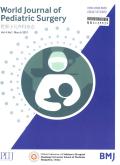Childhood opportunity and appropriate use of child safety restraints in motor vehicle collisions
IF 0.8
4区 医学
Q4 PEDIATRICS
引用次数: 0
Abstract
Objectives Safety restraints reduce injuries from motor vehicle collisions (MVCs) but are often improperly applied or not used. The Childhood Opportunity Index (COI) reflects social determinants of health and its study in pediatric trauma is limited. We hypothesized that MVC patients from low-opportunity neighborhoods are less likely to be appropriately restrained. Methods A retrospective cross-sectional study was performed on children/adolescents ≤18 years old in MVCs between January 1, 2011 and December 31, 2021. Patients were identified from the Children’s Hospital Los Angeles trauma registry. The outcome was safety restraint use (appropriately restrained, not appropriately restrained). COI levels by home zip codes were stratified as very low, low, moderate, high, and very high. Multivariable regression controlling for age identified factors associated with safety restraint use. Results Of 337 patients, 73.9% were appropriately restrained and 26.1% were not appropriately restrained. Compared with appropriately restrained patients, more not appropriately restrained patients were from low-COI (26.1% vs 20.9%), high-COI (14.8% vs 10.8%) and very high-COI (10.2% vs 3.6%) neighborhoods. Multivariable analysis demonstrated no significant associations in appropriate restraint use and COI. There was a non-significant trend that children/adolescents from moderate-COI neighborhoods were more likely than those from very low-COI neighborhoods to be appropriately restrained (OR=1.82, 95% CI 0.78, 4.28). Conclusion Injury prevention initiatives focused on safety restraints should target families of children from all neighborhood types. Level of evidence III. Data are available upon reasonable request.儿童机会和在机动车碰撞中适当使用儿童安全约束装置
目标 安全约束装置可减少机动车碰撞(MVC)造成的伤害,但往往使用不当或未使用。儿童机会指数(COI)反映了健康的社会决定因素,但其对儿科创伤的研究却很有限。我们假设,来自机会较少社区的 MVC 患者不太可能得到适当的约束。方法 我们对 2011 年 1 月 1 日至 2021 年 12 月 31 日期间发生 MVC 的 18 岁以下儿童/青少年进行了一项回顾性横断面研究。患者身份来自洛杉矶儿童医院创伤登记处。结果是安全约束的使用情况(适当约束、未适当约束)。按家庭邮政编码划分的 COI 水平分为极低、低、中、高和极高。控制年龄的多变量回归确定了与使用安全约束相关的因素。结果 在 337 名患者中,73.9% 得到了适当的约束,26.1% 没有得到适当的约束。与受到适当约束的患者相比,更多未受到适当约束的患者来自低感染率(26.1% 对 20.9%)、高感染率(14.8% 对 10.8%)和极高感染率(10.2% 对 3.6%)社区。多变量分析表明,适当限制措施的使用与 COI 之间无明显关联。中度 COI 社区的儿童/青少年比 COI 非常低的社区的儿童/青少年更有可能得到适当的约束,但这一趋势并不明显(OR=1.82,95% CI 0.78,4.28)。结论 以安全约束为重点的伤害预防措施应针对所有社区类型的儿童家庭。证据等级 III。如有合理要求,可提供数据。
本文章由计算机程序翻译,如有差异,请以英文原文为准。
求助全文
约1分钟内获得全文
求助全文

 求助内容:
求助内容: 应助结果提醒方式:
应助结果提醒方式:


